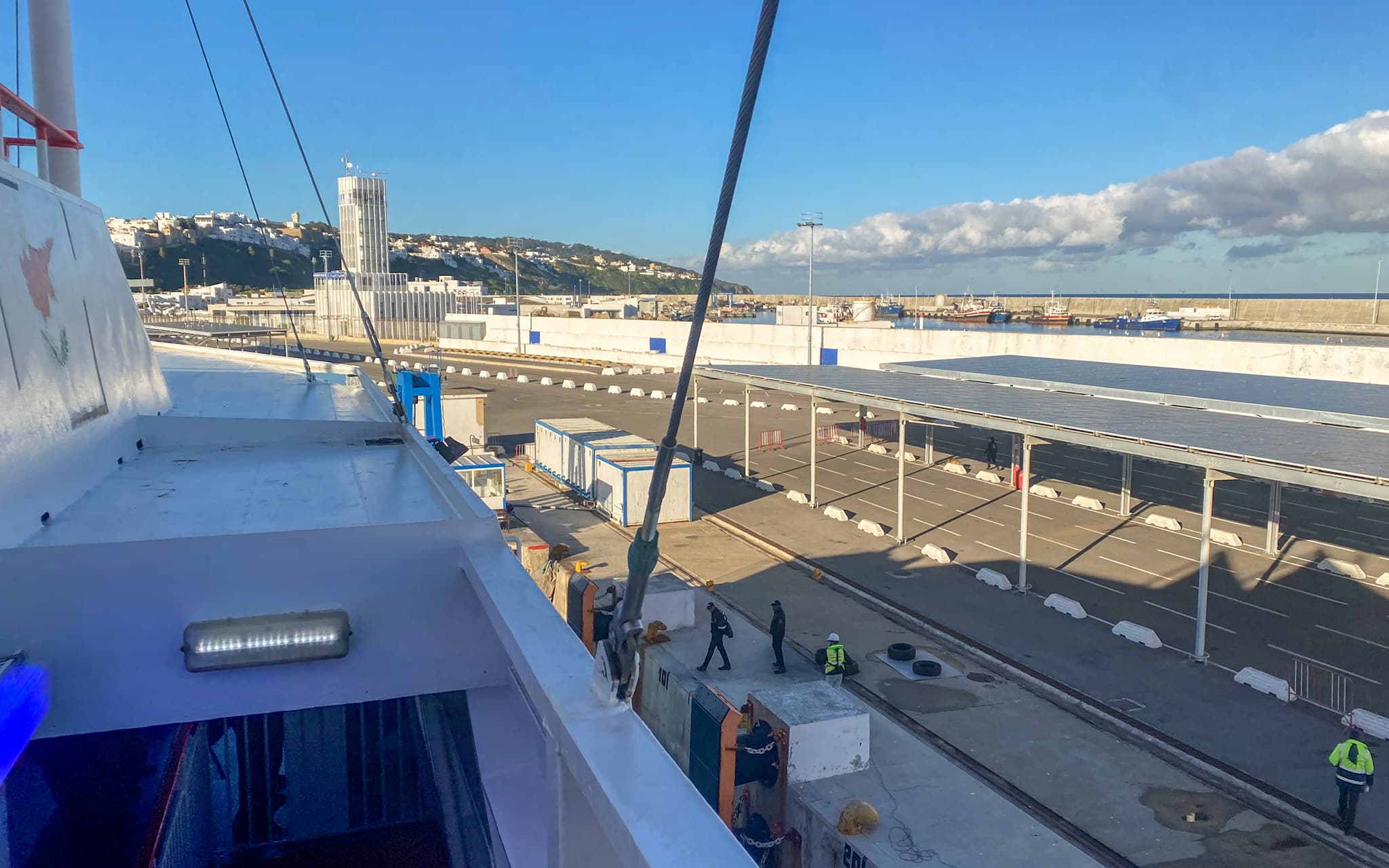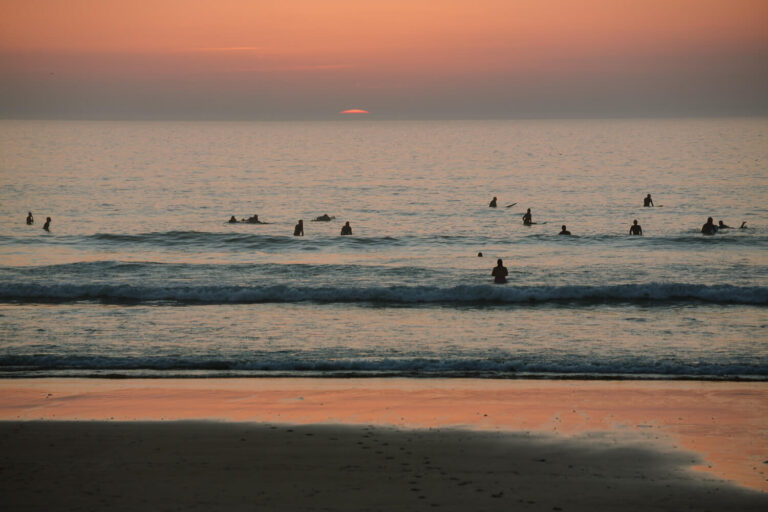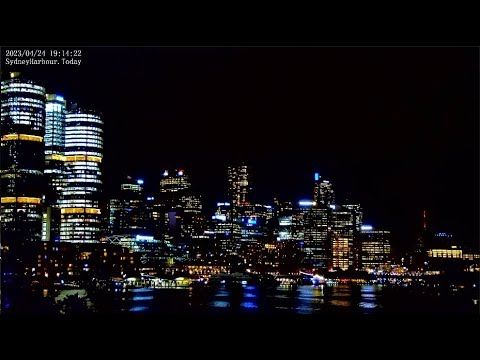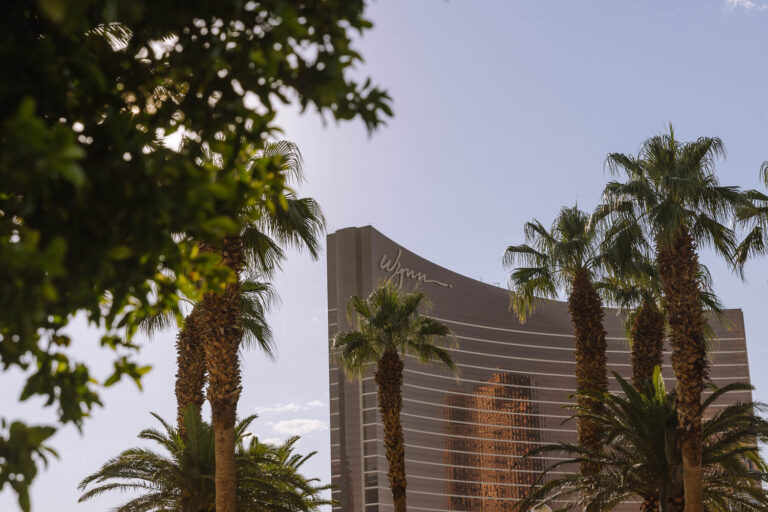How To Travel From the UK to Morocco Without Flying
When I decided to stop flying in Europe a couple of years back, I knew it would make travelling to other continents a little harder and accepted that boarding a plane would still be inevitable. However, travelling from the UK to Morocco without flying is arguably the easiest sustainable journey you can make to access another culture and continent – likely even more so than reaching some remote parts of Europe.
Thanks to the decent selection of Spain to Morocco ferries and the ever-growing choices for reaching mainland Europe from the UK without flying, this journey is relatively straightforward – you can even visit Morocco from Spain on a day trip. Couple that with Spain and France’s excellent high-speed train networks, and this journey can also be pretty quick. Still, stopovers in Paris, Barcelona or Seville are a bonus for those who aren’t in a rush to reach North Africa.
Here, I’ll share the recent journey I took using trains and a ferry to travel from the UK to Morocco without flying, plus some tips on alternative methods for those with more time or less money looking to travel the same route.

How much does it cost to travel from the UK to Morocco flight-free
The cheapest way to travel from the UK to Morocco without flying is usually going to be by bus. FlixBus covers most of the route, including connections from London to Paris (some take the Eurotunnel, others board a ferry), and these tickets can be as cheap as £25; though the costs and complications can add up after that – also, if you’re not starting in London, see more tips on that below.
The quickest option for the flight-free journey from the UK to Morocco is by train. And if you look for deals and book a bit in advance, it can also be fairly affordable. Here’s the route I recently took and what I paid for each (booked about six weeks ahead around deal dates):
London to Paris Eurostar (€39 – promo tickets); Paris to Barcelona high-speed rail (€35 – promo tickets); Barcelona-Madrid-Seville using Iryo’s discounted high-speed rail ticket (€28 for both); Seville to Tarifa on Comes Bus (€24 – no discount tickets available); Ferry from Tarifa to Tangier, Morocco (€25 – advanced discount). This made the one-way trip €151 – around £130 at the current exchange rate.

How does immigration and customs work on the Spain to Morocco ferry?
As a British passport holder, you won’t require a visa for Morocco from the UK unless you’re planning on staying in the country for more than 90 days. Likewise, for crossing the EU/Schengen Zone, the standard 90-day rule applies. You will need to ensure your passport meets all the criteria detailed on the UK Gov Website, but ultimately, travelling by ferry is the same as flying when it comes to passport rules, etc.
When you leave Spain to board the Morocco ferry, you’ll be stamped out of the Schengen zone and then free to board the boat – if you’re travelling via Gibraltar, keep in mind it will be a slightly different process as you’ll cross back from Spain, into the British Overseas Territory, before travelling to Morocco. Once onboard the Spain to Morocco ferry, you’ll need to join the line for immigration control on the ferry itself. As such, you’ll be stamped into Morocco when you’re in the waters, and when you get off the boat, you’ll just flash that passport stamp. Be sure to join the line when you get onboard, as it can get rather long, and you must get your passport stamp onboard.
Stage One: From the UK to Spain by train, bus, or ferry
Working out your journey to Spain will depend on which ferry port you decide to take the journey to Morocco from. The shortest crossing is from Tarifa to Tangier (this arrives in Tangier town itself, while many others go to Tangier Med, outside the city) and this is the one I would suggest as best if you’ve time for a little jaunt through Spain en route.
Alternatively, you could take the ferry from Barcelona (longer and more expensive, as you may want a cabin for the overnight sailing) so you spend less time travelling across Spain. Below, in ‘Stage Two’, I’ve highlighted the different ferry options in case you are still undecided.

UK to Spain by train (quickest)
For me, this is the best option for travelling to Morocco from the UK without flying, and it’s the route I took on my most recent trip. Get on one of the earliest Eurostar departures from London to Paris, and that way, you can be in Barcelona by the evening. Juxtaposed border controls are operated so when you arrive in Paris, you don’t need to deal with customs or immigration as this will have been done in London. However, you will need to factor in time to transit to another station for your onward train.
From Paris, the quickest onward option is to take the TGV with SNCF from Paris to Barcelona, which takes just under seven hours – 21:27 is the arrival of the last TGV of the day. This route can be expensive. However, if you book in advance, you might be able to snag a ‘sale ticket’ for less than €40. Alternatives are the slow and scenic night train via the Pyrenees or travelling via Bordeaux, which can sometimes be cheaper. You’ll then likely want to overnight in Barcelona to break up the journey. Or, if it’s one of the days when the 2:45 AM ferry departs from Barcelona to Tangier, you could opt for this connection instead.
From Barcelona, it’s easy to continue your journey using Spain’s excellent high-speed train network. If you’re planning to travel to Taria for the ferry, then you’ll want to travel from Barcelona to Madrid (2:40), Mardid to Seville (2:40), and then from Seville, I’d propose taking the bus to Tarifa with COMES (3 hours). It’s only a 10-minute taxi between Santa Justa train station and Prado (NOT Plaza was Armas) bus station.
Renfe is the national rail operator, but Iryo (and sometimes Ouigo) can be a lot cheaper for these two train journeys, especially when booked ahead, so check all three operators’ websites to find the best deal. To see the best prices, search for the Barcelona-Madrid and Madrid-Seville tickets separately; I’ve found the prices are usually higher when you search for connecting services than individually. You could either stay overnight in Seville or spend a night in Tarifa. Then, on the return trip, pick a different spot to stay for the night and break up the journey.
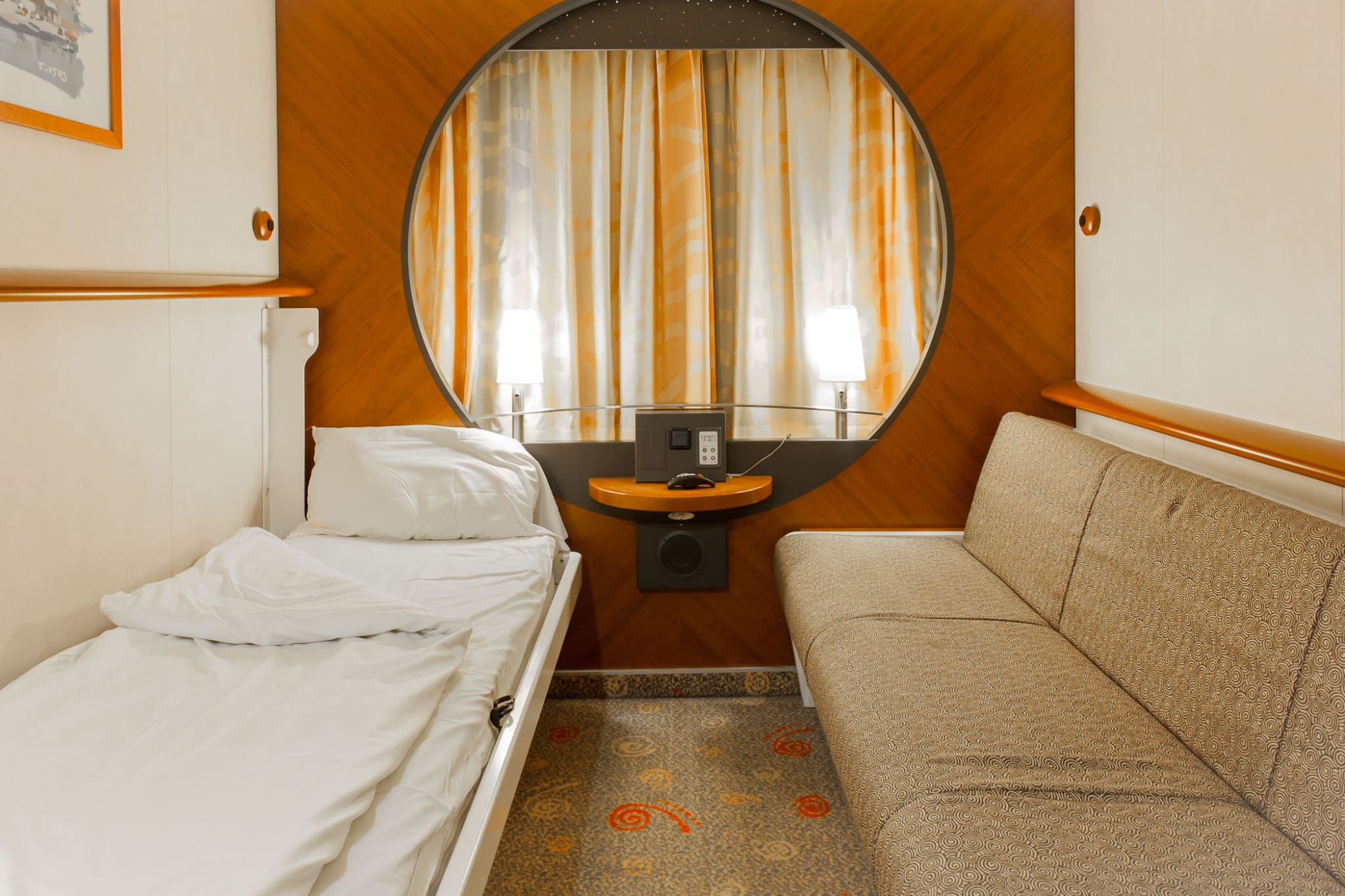
UK to Spain by ferry
While there are ferries from the UK to France, these likely won’t be that useful (unless you’re driving) as they arrive in the north of the country, making connections more challenging. The UK to Spain ferries are handier (coming into Bilbao or Santander), but this will be more pricey as you’ll be doing an overnight sailing, and cabin costs can add up. You’ll also need to factor in the extra costs of crossing from north Spain to the south for the Spain to Morocco ferry.
UK to Spain by bus (cheapest)
The cheapest (and longest) option to reach the Spain to Morocco ferry is to travel exclusively by bus. FlixBus and National Express offer connections to Paris either by driving in the tunnel or crossing on the ferry – the overnight option gets you into the French capital in the morning. From there, FlixBus (or ALSA or BlaBlaBus) also offers fairly decent connections to Spain, and you’ll need to change buses again to continue to your ferry.

Stage Two: From Spain to Morocco by ferry
When picking your Spain to Morocco ferry, you’ll have plenty of options: overnight sailings from Barcelona, quick one-hour hops directly from Tarifa to Tangier Ville (easily walkable to the historic centre), or other choices to Tangier Med, around 40 km outside the city, or Nador.
I like the Tarifa to Tangier option as it’s the quickest and delivers you right into town; the Strait of Gibraltar is the shortest distance to cross. But, depending on your budget and how you prefer to travel, others may be more interesting.
Time difference tips: Remember there is a time difference between the UK and France/Spain when planning your journey. Then, in Morocco, the clocks do not change for winter and summer in the same way Spain does, so for half of the year, the two countries are in the same time zone, while there is a time difference for the other half. However, it’s more complex than that. During the month of Ramadan (which varies depending on the Islamic lunar calendar), Morocco changes its clocks by an hour.
Good to know: Due to adverse weather conditions (particularly in winter), sometimes the ferry crossings can be delayed, cancelled or re-routed to another nearby ferry port. While these occurrences aren’t very regular, it’s something to keep in mind if you’re on a rigid itinerary.
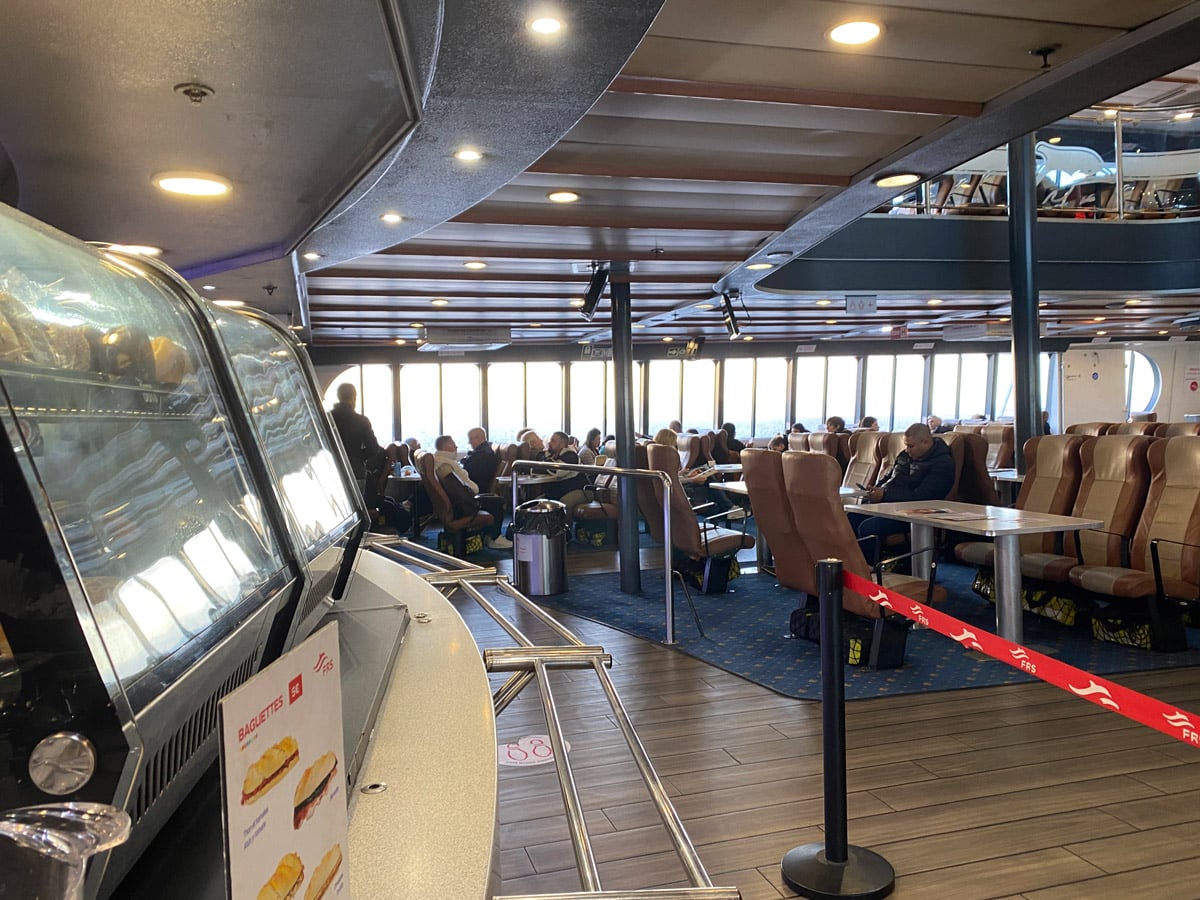
Tarifa to Tangier Ferry
Once you’re in Tarifa, the ferry port is just a short stroll from the historic centre. The crossing only takes around one hour and is operated by FRS Ferries year-round daily or InterShipping seasonally. If you’re leaving your car here, arrive early to ensure you get a parking space. The official recommendation is to arrive 90 minutes before the crossing. However, when I travelled in December 2023 on the morning sailing as a foot passenger, security didn’t even open until 30 minutes before departure – perhaps in peak season, it’s different.
Even if you’ve checked in online and have your boarding pass, you should still go to the ticket desk to get your immigration form for Morocco (to hand in onboard when doing immigration, which takes place on the boat, not when you disembark in Tangier) and they will give you a printed boarding pass. Onboard, you’ll find a cafe, sundeck and plenty of seating – the premium ticket gives access to the upstairs lounge, but honestly, for the price, the differences are minimal.
Algercias to Tangier Med Ferry
The second shortest sailing is from Algeciras (less than an hour along the coast from Tarifa) to Tangier Med and is very similar to the above Tarifa option. However, you won’t arrive in the city centre, and you will need to factor that in. For this reason, I think it’s easier to travel to Tarifa and do the faffing around between towns on the Spanish side rather than once in Morocco.
Gibraltar to Morocco Ferry
Very close to Algercias is Gibraltar, and it’s tempting to use this as an option when travelling to Morocco from the UK without flying if you’d like to visit ‘The Rock’ as part of your trip. Of course, this will mean entering the British Overseas Territory before leaving. Gibraltar is not part of the EU Customs Union, and the Gibraltar Border Agency manages the crossing between Spain and the British exclave. This ferry isn’t as regular and can be rather sporadic (especially in winter), so it will require a bit more forward planning to align dates.
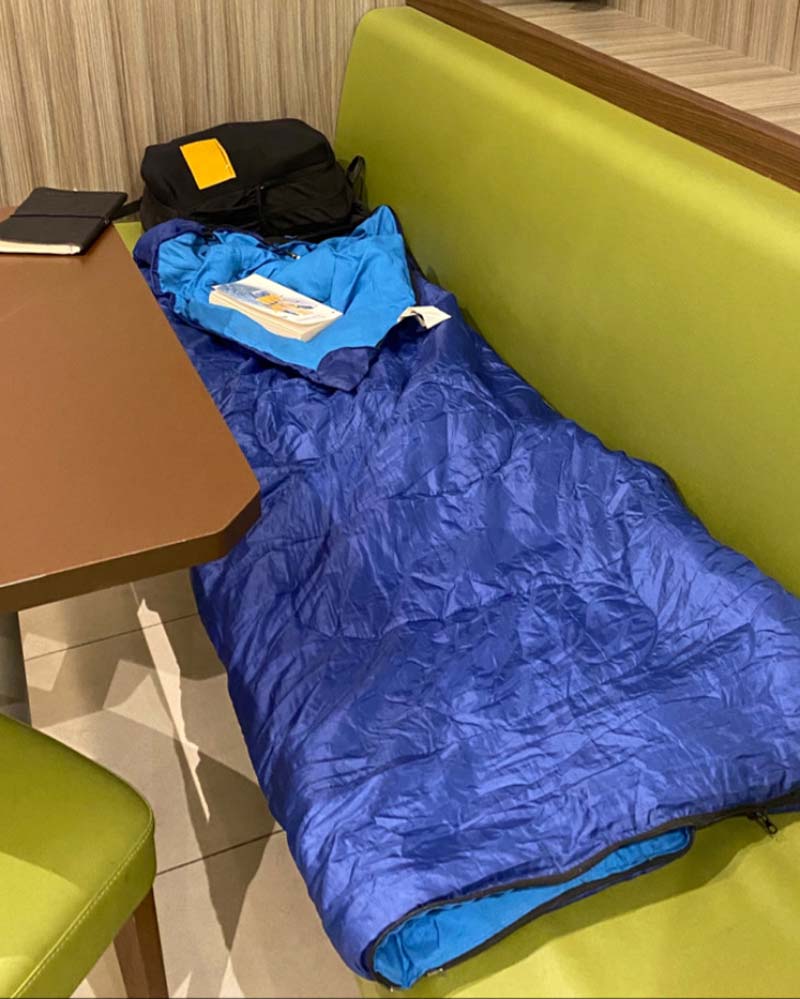
Alternative ferries from Spain to Morocco
Aside from the shortest routes I’ve detailed above, it is possible to travel from the UK to Morocco without flying using another operator from a different port.
The most obvious of these is the overnight sailing operated by GNV – they get some bad reviews, but I’ve used them to travel to Sicily and Mallorca and had no problems; plus, they are usually quite affordable. The Barcelona-Tarifa sailing takes around 36 hours, and you can book a cabin or just a seat. When I sailed to Mallorca, I found a ‘not allowed’ but comfy sofa in the cafe to sleep on. From Barcelona, you can travel to either Tangier Med or Nador.
Other options are from Motril (Andalucia) to Nador, Al Hoceima and Tangier Med, or Almeria (Andalucia) to Nador.
Spain to Moroco via Ceuta or Melilla
Spain has two exclaves on Morocco’s land borders, Ceuta and Melilla. If you decide to take the ferry to one of these destinations first, be aware you’ll need to do the customs and border crossing on land when you leave the exclaves. There are no real options for travelling onwards by bus across the border, so you’ll need to reach the border crossing by bus or taxi, then go through immigration and customs on foot, and then find another taxi to connect you with a bus. As such, it’s not the most straightforward option, but it is interesting if you want to see Ceuta or Melilla. For Ceuta, depart from Algeciras; for Melilla, travel from Malaga or Almeria.

Stage Three: Onwards connections from the Spain to Morocco ferry
If Tangier isn’t your final destination in Morocco, it’s easy to travel onwards to other major cities using trains or buses or finding the correct Grand Taxi.
Trains
Once you arrive in Tangier city, the high-speed Al Boraq train services run regularly, connecting Tangier to Casablanca in around two hours. From there, you can easily change to another high-speed service to continue to Marrakech.
Buses
There are two major bus operators in Morocco, CTM and SupraTours. You can use these for onward travel once you’re in Tangier City – this is the best option if you want to go to Chefchaouen. ALSA operates the bus connection to Tangier Med.

Can you do a Spain to Morocco Day Trip?
Yes. It’s possible to do a day trip from Spain to Morocco using the ferries from Tarifa to Tangier. Both operators on this route sell packages, including the bus tour on the other side, but personally, I think you might be best just booking the first ferry in and the last ferry out and exploring independently; it’s only a short walk from the ferry port into Tangier’s medina.

